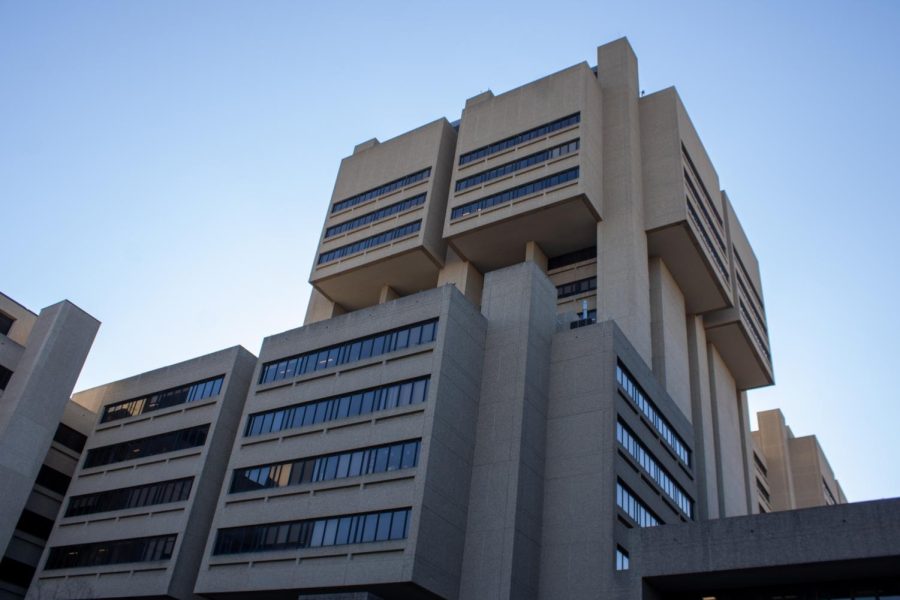Moos Tower, the tallest building on campus, ranks among the least visually appealing buildings at the University of Minnesota.
Along with its 17 floors, 853-foot height and local fame, come the opinions of all who gaze upon it. No matter the preconceptions some have about the building’s appearance, its origin story offers a glimpse into 1970s University politics.
The Architects Collaborative, a well-known architectural firm based in Cambridge, Massachusetts, designed and built the concrete tower in the early ‘70s. The University named it after Malcolm Moos, a political scientist who served as the University’s president from 1967 to 1974.
The building represents a design style called brutalism. Tom Fisher, a University professor of architecture, said during their peak popularity at the time, designers created brutalist buildings to purposefully stand out among cityscapes. Architects who used a brutalist approach believed materials should be showcased as they are, without decorative alterations.
Fisher explained the appeal of brutalism during the ‘60s and early ‘70s as a response to civil rights protests and the outbreak of anti-Vietnam War protests, including the University’s famous anti-war student demonstrations of May 1972.
“There was a lot of a sense that cities were dangerous places, and I think brutalism had this kind of fortress-like quality to it, and certainly, Moos Tower had that aspect to it,” Fisher said. “When people think of Moos Tower as almost like a castle or something that’s very stark and foreboding, it very much captured the sentiment of the people in that early 1970s period.”
Brutalism also catered to the desire for flexibility by healthcare systems, according to Fisher, who pointed out that some of the interior walls of Moos Tower can be moved around.
“Even though the buildings were frequently concrete and somewhat fixed in character, there was also this interest in flexibility around changes going on in the healthcare world,” Fisher said. “We didn’t know what the needs of medicine would be in decades to come.”
Moos Tower was originally planned to extend all the way to Harvard Street, but this idea was shot down because it required the University to tear down Grace Lutheran Church, according to Fisher.
Elmer Andersen, a former Minnesota governor and University regent at the time, got married in Grace Lutheran and had a strong objection to its demolition, according to Fisher.
“Grace Lutheran Church still sits there because Elmer Anderson, a very well respected former governor who was on the Board of Regents, said you can’t tear that building down,” Fisher said.
Moos Tower functions well, not only as a medical hub but as a lesson about brutalism and the University’s history, according to Fisher.
“We might look at it now and think it’s really ugly and that it doesn’t really fit in with anything around it, and that’s all true, but I do think that it has worked well,” Fisher said. “It was a reflection of its time. I don’t think we will do many buildings like that in the future, but we have it, it works and it’s a landmark.”








